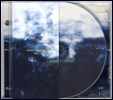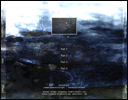MYSTERY SEA 60 | Hiroki Sasajima | [Nille]
![]() ARTWORK
ARTWORK ![]()
and, the streetlight that shakes in the bottom of a well.
slow wind carries dry soil to the north.
still nobody knows old oak wooden chair.
reflect
realism...
- Hiroki Sasajima, January 2010
![]() PRESS RELEASE
PRESS RELEASE
![]()
Tokyo
sound artist Hiroki Sasajima has recently been marking
his own territory into field recordings.
From his early close contacts with mesmeric forms of ambient music,
he has quickly veered towards a much more daring & fully grown sound
assemblage where substrates of discreet & substantive drones serve
as spine to astoundingly enhanced & almost prehensile processed
field recordings...simultaneously these give out an extraordinary zen
imbued concision & purity...
Hiroki has undoubtedly an acute ear for sonic details
& striking microtextures, managing to interiorize with a natural
grace precise portions of his immediate experienced environment...
After various contributions to netlabels on the cutting edge (Mandorla,
Ripples, Q-Tone, Impulsive Habitat...) and first physical releases
("Renz" on Q-Tone, & "Monogenic" on SRA...),
Hiroki is now very much in demand, and assured to extend
his explorations alongside many yet unpaved roads...
There at the birth of his undeniable talent, Mystery Sea is VERY thrilled
to present you his engulfing specific opus "Nille"...
Rubbing
of surfaces, minute frictions
in open spaces, cavities, corners, somber alleys & backyards...
"Nille" fathoms elements in search of their
inner memory,
listening to their own voice,
breathing new life to small debris or vegetal remains...
Sustained
by primordial hums,
"Nille" dissects and restores,
each noise becoming a receptacle, a refuge,
a lodge for ambered moments & atoms in motion...
Gazing
at everything outside,
"Nille" ingests literally the landscape
picking up its most intimate flux,
the sublimated in the apparent well-known...
"Nille"
merges with its surroundings and every object,
and from a single animistic reflection in a neglected pool,
it can stir you up to unsuspected, elating interaction...
01. Part 1 ![]()
02. Part 2
03. Part 3
04. Part 4 ![]()
![]() LENGTH
LENGTH ![]()
47'26
![]() FORMAT
FORMAT![]()
CDR ltd to 100 numbered copies
VITAL WEEKLY 729|Frans
De Waard
This is the second release by Hiroki
Sasajima we hear, following 'Monogenic' on Sentient Recognition
Archive (see Vital Weekly 699). 'Nille' is a much different
work than 'Monogenic'. That one was alike the works of Jonathan Coleclough
and Paul Bradley, here in the first piece, its seems that the field
recordings are largely unprocessed. I can imagine him on a boat on the
'Nile' (I don't know what 'Nille' means, but I keep
reading 'Nile'), with contact microphones attached to it to capture
some far away water sounds. In other tracks we learn that the boat is
with a motor and the hum is being picked, albeit also far away to which
he adds loops of concrete sounds. Its hard to say what those sounds
are. At the very best I can see these are rumbles of some kind. Its
all quite minimal with just a few sounds that are only altered in a
minimal way, but the material is quite intense, spooky even. One could
say that the third parts (2, 3 and 4) have a similar built up, drawing
from quite a similar set of sounds, which is perhaps a pity. But overall
this I thought was a great release. One that fits the Mystery Sea quite
well: drone like, water like and mysterious.
vital weekly
WONDERFUL
WOODEN REASONS|Ian
Holloway
Japanese sound artist Sasajima's
contribution to the always recommended Mystery Sea project utilizes
skittish field recordings in concord with sparse and mournful
tonal elaborations. The nature of his field recordings mean that
this isn't the most immersive of music as the insectile chittering serves
to keep you at arms length from the music. It does have a nicely
organic and bespoke feel to it though that allows it a modicum of charm
and a distinct sense of purpose.
As I've said before my preference is usually for music with a slightly
warmer mien than is displayed for much of this album but that hasn't
stopped me from enjoying it immensely as it's a very nicely constructed
set.
wonderful wooden reasons
TOKAFI
|Tobias
Fischer --- NEW !
Looking at paint: A laboratory for the observation
and dissection of sound.
Paradoxically, the most radical
and innovative music hardly ever stems from the most obviously stunning
timbral creations. Extreme noises merely exaggerate and distort what
is already there, after all. If truly groundbreaking art is about making
the invisible visible and the inaudible audible, then it must by default
focus on the hidden and seemingly trivial sounds which we pay no attention
to in our daily lives. This counter-intuitive yet entirely convincing
philosophy is the departure point for Hiroki Sasajima's
current work. Just as with some of his fellow Tokyoites, including Sound
Artist Yui Onodera and Jazz formation Mouse on the Keys, Sasajima
regards the Japanese metropolis both as a source of sonic inspiration
and an acoustic body. Contrary to them, however, his gaze is neither
directed towards the busy streets and crowded spaces nor towards the
quiet oases embedded into its chinks. Rather, his interest is sparked
by the vaporous layer of sonic dust forming between these poles, by
the emissions usually drowned out by the constant din surrounding us.
On „Nille“, his first major release following
a string of netlabel publications mainly applauded within a small circle
of connoisseurs, the determination with which he has followed this concept
to its logical conclusion has resulted in an album of austere design
and uncompromising severity. As on a lot of releases from the genre,
drones and field recordings play a seminal role here. But - and this
puts Sasajima beyond comparison - they never segue.
Rather, both are treated as independent entities neither corresponding
nor contrasting with each other. „Reflect realism“, the
artist suggests in his liner notes and this seemingly simple assignment
contains within itself the key to the compositional aim behind the music:
The mutual ignorance between his elements uproots them and effectively
places them in Sasajima's laboratory for observation
and dissection, like insects and plants placed underneath a microscope.
This, meanwhile, poses an important question: If sounds loose their
„materiality“, „functionality“ and "natural
context", what remains of them after this procedure?
The answer is anything but straight-forward, as all of the four pieces
on „Nille“ present the audience with variations
on the aforementioned underlying theme. On „Part 1“, a variety
of sounds, ranging from liquid chuckling and aquatic gurgling to what
could be the immersion of various objects into water, pass by against
the backdrop of sustained and gradually condensing atmospheres, eventually
culminating in a sequence of tiny crystalline bells. On „Part
2“, meanwhile, these ambiances become more insistent, especially
gaining in lower resonance, while the accompanying transformations appear
to restrict themselves to a single rustling sound, carefully changing
over the course of the piece. As apparent as these different shadings
may be on paper, by this point, the listener has already enjoyed almost
half an hour of music, pointing to the psychedelic qualities of the
material: Clocking in around the twelve-minute-mark, these are slow-moving
meditations without apparent direction or goal, which one might easily
perceive as „uneventful“. And yet, if anything, the approach
is even intensified on the third installment, a warmly shimmering cloud
of deep swell and gentle micro-clicks. Representing the only serious
attempt at an integral fusion between the different layers, it almost
disappears within its own ephemeral shell, space peacefully folding
in on itself.
And yet, it is the conceptual heart of the entire record. It is here
that the seemingly unaimed operations of the opening sections are revealed
as a process of gradual withdrawal. Increasingly, the foreground as
an acoustic area defined by increased relative volume and more pronounced
tonal colour, turns into a void, the music slowly ebbing away into silence
as if pulled back by a tidal force. What remains are serene drones,
patiently humming far away in an undefined distance. Simply by remaining
put, they have become the center of attention. It is only now that one
discovers that one has literally been drawn into „Nille“
as if observing an intriguing picture in an empty gallery, shuffling
closer and closer towards the canvas until one has arrived within touching
distance and is looking at the structure of the paint itself –
a vast, almost perfectly smooth, yet finely granular sheet of deep,
dark blue.
Observing the unfolding of the process is not unlike taking in one of
Kazimir Malevich's („White on White“) or Robert Rauschenberg's
monochromatic paintings – one not only needs to reset one's expectations
but one's focus as well. It is a return to the essence and Sasajima
appears to be actively nurturing the notion by unfolding his materials
with systematic meticulousness and an almost stoic calm. You can virtually
see him standing out there in an alien landscape, pointing his microphone
at bizarre creatures and playing with surreal objects in a bid of documenting
their sounds with all but scientific precision. While many composers
tend to either speed up subjective time or to slow it down, „Nille“
arrests it in a succession of singular moments devoid of any overarching
narrative. None of them necessarily has to „mean“ anything.
But the continuity and timbral coherence of this chain of instances
makes the underlying flow of time palpable with forceful intensity.
Of course, the somewhat demure quality of some of the sounds on the
album implies that one's first impression may not be one of great emotional
engagement or intense sensory stimulation. But these qualities do come
over time, creeping in one the audience like a nagging thought fighting
its way into consciousness. And as is so often the case with more discrete
but all the deeper reflections, they are sure to outlast their more
striking and extreme counterparts.
tokafi
[^]

